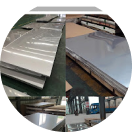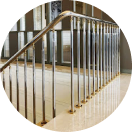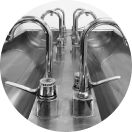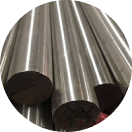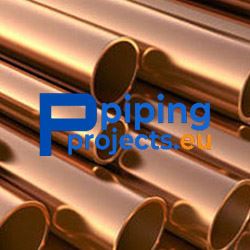Copper Nickel Pipe Manufacturers, Suppliers & Exporters in Europe - PipingProjects.eu
PipingProjects.eu is one of the leading Copper Nickel Pipe Manufacturer in Europe, renowned for our steadfast commitment to excellence in copper nickel pipes. Focusing on precision engineering and superior craftsmanship, we cater to the diverse needs of our clientele with top-tier copper nickel piping solutions. Our Copper Nickel Pipes are esteemed for their exceptional durability, corrosion resistance, and optimal performance in harsh environments. As a trusted Copper Nickel Pipe Supplier in Europe, we set the industry standard for quality and reliability, ensuring our customers receive premium copper nickel piping solutions that surpass expectations. With our dedication to innovation and customer satisfaction, we remain the preferred choice for copper nickel pipe supply across the continent.
What is Copper Nickel Pipe?
Copper Nickel Pipes, also known as Cupronickel Pipes, are a type of alloy that combines copper with nickel. The most common Copper Nickel Alloy is composed of copper with around 90% to 70% and nickel with 10% to 30%, depending on the specific grade. The alloy may also contain small amounts of other elements, such as iron and manganese.
Copper Nickel Pipes come in various grades, with the most common being Cu-Ni 90/10 (90% copper, 10% nickel) and Cu-Ni 70/30 (70% copper, 30% nickel). These alloys are known for their high strength, ductility, and ability to withstand harsh conditions, making them suitable for a wide range of applications in corrosive environments where traditional materials might be less effective.
Top leading Manufacturing Companies
Different grades of Copper Nickel Alloy Pipe?
Copper Nickel Alloys come in various grades, each with distinct compositions tailored for specific applications. Two of the most common grades are Cu-Ni 90/10 (90% copper, 10% nickel) and Cu-Ni 70/30 (70% copper, 30% nickel). Cu-Ni 90/10 is renowned for its excellent corrosion resistance in seawater and marine environments, making it a preferred choice for shipbuilding and offshore structures. On the other hand, Cu-Ni 70/30, with a higher nickel content, exhibits increased strength and durability, often used in applications requiring enhanced mechanical properties.
Other less common grades may include Cu-Ni 66/30/2/2, which includes small amounts of iron and manganese for improved strength, and Cu-Ni 77/15/8 for applications demanding a balance between corrosion resistance and cost-effectiveness. The selection of a specific copper nickel grade depends on the intended use, environmental conditions, and the desired combination of properties such as corrosion resistance, strength, and thermal conductivity. These versatile alloys find applications in industries like marine engineering, chemical processing, and power generation.
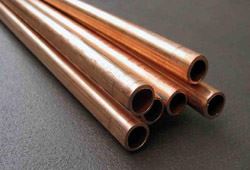
Copper Nickel Pipe
Copper Nickel Pipe - Specifications
- Product : Copper Nickel Pipe
- Size : 1/8″NB TO 48″NB IN
- Schedule : SCH20, SCH30, SCH40, STD, SCH80, XS, SCH60, SCH80, SCH120, SCH140, SCH160, XXS
- Forms : Seamless / ERW / Welded / Fabricated / LSAW Pipes
- Standards : JIS, AISI, ASME, ASTM, AMS, GB, DIN, EN, GOST
- Method : Hot Rolled & Cold Rolled

Trusted
Supplier

Genuine
Product

Easy
purchase
How to Weld Copper Nickel Pipes?
- Choose the Best Filler Metal: Select a filler metal that matches the composition of the Copper Nickel Alloy being welded. Common filler metals for Copper Nickel Alloys include ERCuNi (for Cu-Ni 70/30) and ERCuNiAl (for Cu-Ni 90/10).
- Clear the Surfaces: Ensure that the surfaces to be welded are clean and free from contaminants. Use a suitable solvent or mechanical cleaning method to remove any oxides, grease, or other impurities.
- Preheat if Required: Depending on the thickness of the pipes and the specific Copper Nickel Alloy, preheating may be recommended to minimize thermal stresses and reduce the risk of cracking.
- Use the Correct Welding Method: Employ a welding technique appropriate for Copper Nickel Alloys, such as TIG (Tungsten Inert Gas) or MIG (Metal Inert Gas) welding. TIG welding is often preferred for its precision.
- Controlling Heat Input: Control the heat input during welding to avoid overheating, which can lead to grain coarsening and reduced mechanical properties.
- Post Weld Heat Treatment (PWHT): Depending on the specific application and alloy, post-weld heat treatment may be recommended to relieve residual stresses.
- Back Purge: In critical applications, consider using back purging with an inert gas to protect the backside of the weld from oxidation.
- Ensure Joint Fit-up: Maintain proper joint fit-up and alignment to ensure a sound weld. Proper preparation of the joint surfaces is crucial for achieving a high-quality weld.
- Follow Manufacturer Guidelines: Always refer to the welding procedure specifications provided by the Copper Nickel Pipe manufacturer, as specific recommendations may vary based on the alloy composition and intended application.
- Inspection & Testing: Perform appropriate testing and inspection, such as visual inspection, radiographic testing, or ultrasonic testing, to verify the quality of the weld and ensure it meets required standards.
Copper Nickel Pipe Tolerance Chart
As a leading Copper Nickel Pipe Supplier in Europe, PipingProjects.eu ensures that our tolerance chart serves as a valuable resource for clients, enabling them to make informed choices based on their specific project requirements.
Cupro Nickel Pipe Tolerance
| Dimension Tolerance |
| Material |
Ultimate Tensile Strength1000 psi (MPa) |
Yield Strength 0.5% Ext.under Load 1000 psi (MPa) |
YElongation % in 2 in. |
Fatigue Strength (10x7 cycles) 1000 psi (MPa) |
Burst Pressure* 1000 psi (MPa) |
| Copper-brazed Steel |
48-55 (0.330-0.380) |
28-34 (0.190-0.235) |
30-40 |
30
(0.210) |
19.5
(0.135) |
| C12200-Phosphorus deoxidized Copper |
32-38 (0.220-0.265) |
10-14 (0.070-0.100) |
45-60 |
10
(0.070) |
12 (
0.083) |
| C70600-Copper Nickel 90-10 |
48-54 (0.330-0.370) |
16-22 (0.110-0.150) |
40-55 |
15
(0.100) |
19
(0.130) |
Advantages of using Copper Nickel Pipes
- Copper Nickel Pipes offer a multitude of advantages that contribute to their widespread use across diverse industries. Renowned for exceptional corrosion resistance, these pipes, particularly Cu-Ni 90/10 and Cu-Ni 70/30 grades, excel in marine applications where exposure to seawater is common. Their high ductility, combined with substantial strength, ensures durability under mechanical stresses, making them a reliable choice for applications requiring both malleability and robustness. Additionally, the natural resistance to biofouling, excellent thermal conductivity, and ease of fabrication make Copper Nickel Pipes ideal for heat exchange systems, such as those found in power plants and marine vessels. The antimicrobial properties further enhance their suitability for applications involving the conveyance of potable water, contributing to improved water quality.
- Beyond their technical attributes, Copper Nickel Pipes boast a long service life, reducing maintenance needs and life cycle costs. Their recyclability aligns with sustainable practices, while the versatility of Copper Nickel Alloys positions them as a dependable solution across industries ranging from shipbuilding to chemical processing. In summary, the combination of corrosion resistance, mechanical strength, thermal conductivity, and other advantageous properties makes Copper Nickel Pipes a preferred choice for critical applications where performance and reliability are paramount.
Dimension Chart of Copper Nickel Pipes
As a leading Copper Nickel Pipe Manufacturer in Europe, PipingProjects.eu makes certain that our dimension chart is a useful resource for customers, allowing them to make educated decisions based on their individual project requirements.
Copper Nickel Pipe Dimensions
| Outside diameter of pipe |
10 bar |
14 bar |
| |
Wall thickness (WT) |
Theoretical weight chart |
Wall thickness (WT) |
Theoretical weight chart |
| nominal |
actual |
actual |
|
actual |
|
| inch |
ND |
mm |
mm |
Kg/m |
mm |
Kg/m |
| 0.125 |
|
10 |
1 |
0.26 |
1 |
0.26 |
| 0.25 |
|
12 |
1 |
0.31 |
1 |
0.31 |
| 0.38 |
10 |
16 |
1 |
0.42 |
1 |
0.42 |
| 0.5 |
15 |
20 |
1 |
0.53 |
1 |
0.53 |
| 0.75 |
20 |
25 |
1.5 |
0.99 |
1.5 |
0.99 |
| 1 |
25 |
30 |
1.5 |
1.2 |
1.5 |
1.2 |
| 1.25 |
32 |
38 |
1.5 |
1.54 |
1.5 |
1.54 |
| 1.5 |
40 |
44.5 |
1.5 |
1.81 |
1.5 |
1.81 |
| 2 |
50 |
57 |
1.5 |
2.34 |
1.5 |
2.34 |
| 2.5 |
65 |
76.1 |
2 |
4.16 |
2 |
4.16 |
| 3 |
80 |
88.9 |
2 |
4.88 |
2.5 |
6.07 |
| 4 |
100 |
108 |
2.5 |
7.41 |
2.5 |
7.41 |
| 5 |
125 |
133 |
2.5 |
9.16 |
3 |
10.95 |
| 6 |
150 |
159 |
2.5 |
10.99 |
3 |
13.14 |
| 7 |
175 |
193.7 |
2.5 |
13.43 |
3.5 |
18.7 |
| 8 |
200 |
219.1 |
3 |
18.21 |
3.5 |
21.19 |
| 10 |
250 |
267 |
3 |
22.24 |
4 |
29.55 |
| 12 |
300 |
323.9 |
4 |
35.94 |
5 |
44.78 |
| 14 |
350 |
368 |
4 |
40.89 |
5.5 |
56 |
| 16 |
400 |
419.1 |
4 |
46.62 |
6 |
69.6 |
| 18 |
450 |
457.2 |
4 |
50.91 |
6 |
76.03 |
| 20 |
500 |
508 |
4.5 |
63.63 |
6.5 |
91.55 |
| 24 |
600 |
610 |
5 |
84.96 |
8 |
135.26 |
| 28 |
700 |
711 |
6 |
118.8 |
9 |
177.45 |
| 32 |
800 |
813 |
6 |
135.99 |
10 |
225.53 |
| 36 |
900 |
914 |
8 |
203.57 |
11 |
278.98 |
How to prevent Copper Nickel Pipes from rusting and corrosion?
PipingProjects.eu stands as a reputable Copper Nickel Pipe Manufacturer in Europe. We pride ourselves on manufacturing copper pipes that adhere to the most rigorous industry standards, ensuring inherent resistance to corrosion. Here are several effective methods to prevent Copper Nickel Pipes from rusting and corroding.
- Apply anti-corrosive coatings on the surface of Copper Nickel Pipes to create a barrier that shields the metal from corrosive elements in the environment.
- Conduct regular cleaning and visual inspections to detect any signs of corrosion early on. Prompt removal of contaminants can prevent the initiation of corrosion.
- Maintain proper water chemistry, especially in marine or industrial environments, as aggressive water conditions can accelerate corrosion. Regular testing and treatment can help control the corrosive potential.
- Consider implementing cathodic protection methods, such as sacrificial anodes or impressed current systems, to minimize the corrosion rate of Copper Nickel Pipes in specific environments.
- Prevent direct contact between Copper Nickel Pipes and dissimilar metals to avoid galvanic corrosion. Use insulating materials or appropriate joint design to mitigate this risk.
- For threaded connections, use appropriate lubricants to prevent galling and ensure that the threads remain free from corrosion.
- Choose the right Copper Nickel Alloy grade based on the specific application. Higher nickel content, such as Cu-Ni 90/10, offers enhanced corrosion resistance in certain environments.
- Employ proper welding techniques and follow manufacturer guidelines during installation to avoid introducing stress points or defects that could become susceptible to corrosion.
- Establish a regular maintenance schedule that includes cleaning, inspections, and any necessary preventive measures to ensure the continued integrity of Copper Nickel Pipes over their service life.
Properties of Cu-Ni 90/10 and Cu-Ni 70/30 Alloys
Cu-Ni 90/10:
- Cu-Ni 90/10 is a Copper Nickel Alloy renowned for its exceptional corrosion resistance, comprised of 90% copper and 10% nickel, with minor amounts of iron and manganese. Widely utilized in marine applications, this alloy stands out for its durability under seawater exposure. Offering a harmonious balance of strength and ductility, Cu-Ni 90/10 is a reliable choice for applications involving various mechanical stresses. With high thermal conductivity, it is well-suited for heat exchange systems in power plants. Additionally, its innate resistance to biofouling contributes to its effectiveness in marine environments.
Cu-Ni 70/30:
- Comprising 70% copper and 30% nickel, with additional elements like iron and manganese, Cu-Ni 70/30 is a Copper Nickel Alloy distinguished by its remarkable corrosion resistance. Particularly prevalent in marine settings, it finds widespread use in shipbuilding and offshore structures. Notable for its heightened mechanical strength compared to Cu-Ni 90/10, this alloy is favored in applications where increased robustness is essential. Maintaining high thermal conductivity, Cu-Ni 70/30 ensures efficient heat transfer, making it suitable for a variety of industries, including chemical processing and offshore oil and gas platforms. Its versatility and resilience make it a key player in corrosion-resistant applications.
Various Types of Copper Nickel Pipe We Supply
PipingProjects.eu is a leading Copper Nickel Pipe Manufacturer in Europe. We supply different types of Copper Nickel Pipes to meet diverse industrial needs with superior quality and precision.
Can Copper Nickel Pipes be used in High Temperature Environments?
- Copper Nickel Pipes are suitable for use in high-temperature environments, and their performance largely depends on the specific alloy composition. Both Cu-Ni 90/10 and Cu-Ni 70/30, the most common Copper Nickel Alloys, can withstand elevated temperatures.
- Copper nickel alloys maintain their mechanical properties at higher temperatures compared to many other materials. They have excellent thermal conductivity, allowing them to efficiently transfer heat. However, it's crucial to consider the specific application and intended temperature range.
- For extended exposure to temperatures above 200°C (392°F), other materials with higher-temperature capabilities might be more suitable. Additionally, factors such as pressure, environmental conditions, and the presence of corrosive agents should be taken into account when determining the appropriateness of Copper Nickel Pipes in high-temperature applications. Consulting with the manufacturer or a materials engineer is recommended to ensure the chosen Copper Nickel Alloy meets the specific requirements of the intended use.
Manufacturing Process of Copper Nickel Pipes
Copper Nickel Pipe is produced in seven steps. It manufactures a wide range of shapes, goods, and parts, ranging from Copper Nickel Pipe and Coil.
- Step 1 : Raw Material Selection
To begin the process of creating Copper Nickel, raw materials such as iron ore and other elements including nickel, chromium, and molybdenum are carefully selected. The choice of alloying elements depends on the specific properties that the Copper Nickel is intended to possess.
- Step 2 : Smelting and Melting
Once the raw materials have been selected, they are smelted in a furnace to create a molten metal alloy. The composition of the alloy is closely monitored and controlled to achieve the desired grade of Copper Nickel.
- Step 3 : Forming
After the molten Copper Nickel has been produced, it is cast into different shapes and forms, depending on its intended use. The most common shapes include slabs, billets, blooms, or ingots.
- Step 4 : Primary & Secondary Steelmaking
The subsequent step is primary steelmaking, which can be accomplished through different methods such as the Basic Oxygen Furnace (BOF) or the Electric Arc Furnace (EAF). At this stage, impurities like carbon are eliminated to achieve the desired chemical composition.
- Step 5 : Casting
The molten Copper Nickel is then cast into semi-finished forms, which can take the shape of plates, sheets, bars, or other forms. Continuous casting or ingot casting methods are usually employed for this purpose.
- Step 6 : Hot Rolling
In the case of products like stainless Copper Nickel Pipes, the semi-finished castings are hot-rolled to achieve the desired thickness and shape. During this process, the thickness of the castings is reduced while improving their mechanical properties.
- Step 7 : Cold Rolling and Annealing
In the case of specific Copper Nickel products such as thin sheets and coils, cold rolling is employed to further reduce the thickness and enhance surface finish. To relieve stresses and enhance corrosion resistance, annealing is frequently performed.


